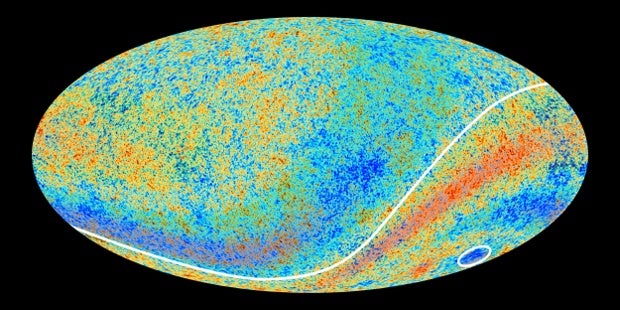Biggest structure in the universe is huge hole, scientists find
The ‘supervoid’ is 1.8 billion light years wide, ‘the largest individual structure ever identified by humanity’ and full of absolutely nothing

Your support helps us to tell the story
From reproductive rights to climate change to Big Tech, The Independent is on the ground when the story is developing. Whether it's investigating the financials of Elon Musk's pro-Trump PAC or producing our latest documentary, 'The A Word', which shines a light on the American women fighting for reproductive rights, we know how important it is to parse out the facts from the messaging.
At such a critical moment in US history, we need reporters on the ground. Your donation allows us to keep sending journalists to speak to both sides of the story.
The Independent is trusted by Americans across the entire political spectrum. And unlike many other quality news outlets, we choose not to lock Americans out of our reporting and analysis with paywalls. We believe quality journalism should be available to everyone, paid for by those who can afford it.
Your support makes all the difference.Scientists have found what could be the biggest thing in the universe, and it is a huge cold hole that could fundamentally change our understanding of the universe.
A giant “supervoid”, 1.8-billion light years wide, could explain a large cold spot in the universe that has been unexplained for more than a decade, scientists say. The Cold Spot was found in 2004 as astronomers looked through a map detailing the make-up of the cosmic microwave background, the radiation left over from the beginning of the universe, but it has been unclear where the cold spot came from until now and caused a problem for scientists looking to model the Big Bang.
If the large cold spot sits between us and the radiation left over from the Big Bang, then “it would be a sign that there is an extremely rare large-scale structure in the mass distribution of the universe”, scientists at the Institute for Astronomy at the University of Hawaii say.
The scientists behind the super void discovery liken it to a hill that light has to climb as it comes from the cosmic background radiation from the Big Bang on its way to the Earth. As it climbs that hill, it slows down — making its wavelength longer, corresponding with a colder temperature and explaining part of the Cold Spot.
But some scientists have said that the discovery makes the mystery bigger, rather than solving it.
“It just pushed the explanation one layer deeper,” Dr Roberto Trotta, a cosmologist at Imperial College London, told The Guardian. “Now we have to figure out how does the void itself form. It’s still a rare event.”
The super void also only explains part of the unusual temperatures seen in in the cold spot, scientists say. Some 90 per cent of the cold spot’s temperature is still unaccounted for.
The Hawaii scientists said that while “the existence of the supervoid and its expected effect on the CMB do not fully explain the Cold Spot, it is very unlikely that the supervoid and the Cold Spot at the same location are a coincidence”. The team will continue to study the cold spot using extra data, they said.
Join our commenting forum
Join thought-provoking conversations, follow other Independent readers and see their replies
Comments